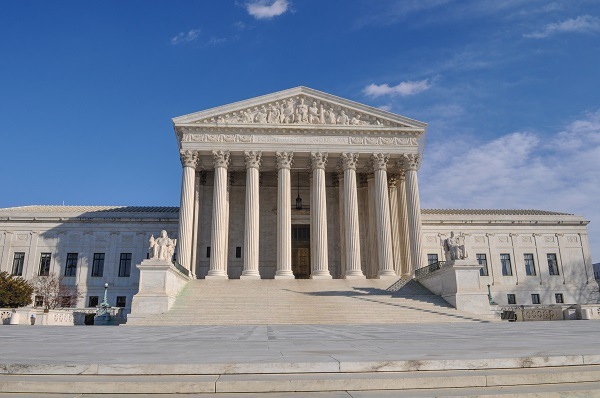In response to the COVID-19 pandemic, starting on January 1, 2021, public and private employers will be required to provide detailed notices to employees when there has been a COVID-19 exposure in the workplace. The new law also requires employers to provide notice to local public health departments for COVID-19 “outbreaks”.
In response to the COVID-19 pandemic, starting on January 1, 2021, public and private employers will be required to provide detailed notices to employees when there is has been COVID-19 exposure in the workplace. The new law also requires employers to provide notice to local public health departments for COVID-19 “outbreaks”.
When is Notice required?
Essentially, the new law requires that when a public or private employer receives notice of potential exposure to COVID-19 by a “qualifying individual” within the infectious period, it must provide notice to its employees within one business day of the potential exposure.
Qualifying individuals are defined as individuals who: (1) have a laboratory-confirmed case of COVID-19; (2) have a positive COVID-19 diagnosis from a licensed health care provider; (3) have a COVID-19 related order to isolate from a public health official; or (4) have died from COVID-19.
Notice is also required when an employer receives: (1) notification from a public health official or licensed medical provider than an employee was exposed to a “qualifying individual”; (2) notification through the testing protocol of the employer that the employee is a “qualifying individual”; or (3) notification from a subcontracted employer that a “qualifying individual” was at the worksite.
Who Must Notices Be Given to?
Employers are required to provide notices to: (1) employees who were at the same worksite as the individual who tested positive for COVID-19 who were on the premises at the same worksite as the qualifying individual within the infectious period; (2) potentially exposed employees and their exclusive representatives and the employers of subcontracted employees (if any) with information regarding COVID-19-related benefits to which the employee may be entitled under applicable federal, state, or local laws; and (3) all employees the disinfection and safety plan that the employer plans to implement and complete per the guidelines of the federal CDC.[1]
Additionally, if there is a COVID-19 “outbreak,” as defined by the State Department of Public Health, employers must provide notice to their local public health agency of the “outbreak” within 48 hours. Employers must provide the names, number, occupation, and worksite of any “qualifying individuals” relating to the “outbreak,” and the business address and NAICS code of the worksite.
Currently, an “outbreak” under this law is defined as “three or more laboratory-confirmed cases of COVID-19 within a two-week period among employees who live in different households.”
How Must Notices Be Provided?
This written notice must be provided in the manner the employer normally uses to communicate employment-related information, as long as the employer can reasonably anticipate the notice will be received by the employee within one business day (i.e. e-mail, text message, in-person memorandums). The notice must be in both English and the any other language understood by most employees.
What Must be Included in the Notices?
Notice to an employee’s exclusive representative must contain the same information as would be required in an incident report in a Cal/OSHA Form 300 (unless it is not applicable or unknown to the employer).
Employers are required to notify employees and exclusive representatives, information about COVID-19 related benefits and options to which they may be entitled to under applicable federal, state, or local laws.
Employers are required to notify all employees and exclusive representatives of the disinfection and safety plan that the employer plans to implement and complete per the guidelines of the federal CDC.
Are there Any Exceptions to the Notice and Reporting Requirements?
Yes. Health facilities, as described in Sec. 1250 of the Health and Safety Code, are exempt from reporting to their local health agency within 48 hours of an “outbreak”.[2]
The notice is also not required if the employees’ regular duties include COVID-19 testing or screening or provide direct patient care to individuals who may have COVID-19, unless the “qualifying individual” is an employee of the same worksite.
What Happens If You Do Not Follow the Notice Requirements?
The new law requires employers to maintain records of notification for at least 3 years and specifies a civil penalty for employers who violate the notice requirement. While arguably, Cal OSHA already had the authority to shut down worksite under certain circumstances, the new law also specifically allows Cal OSHA to prohibit operations, processes, and prevent entry into work sites that exposes employees to COVID-19 such that it constitutes it as an imminent hazard.
What Should Employers Do Now
Since the new law will not go into
effect until the next year, employers should take the time now to create the
processes for complying with the notice requirements. Since the notice
requirement is very specific and requires dissemination within one business
day, employers should prepare notice templates now and a standard operating
procedure so that they are prepared if such a notice is required.
[1] The new law requires employees provide notice to three different categories of employees making compliance with the law confusing and potentially duplicative.
[2] In a subsequent “Letter to the Journal”, the author of the bill also indicated that the law also meant to exempt “additional health facilities that are defined elsewhere but that are also already required to report workplace COVID-19 exposures and cases to the state Department of Public Health, or local health departments pursuant to state or federal law.”
In response to the COVID-19 pandemic, starting on January 1, 2021, public and private employers will be required to provide detailed notices to employees when there has been a COVID-19 exposure in the workplace. The new law also requires employers to provide notice to local public health departments for COVID-19 “outbreaks”.
When is Notice required?
Essentially, the new law requires that when a public or private employer receives notice of potential exposure to COVID-19 by a “qualifying individual” within the infectious period, it must provide notice to its employees within one business day of the potential exposure.
Qualifying individuals are defined as individuals who: (1) have a laboratory-confirmed case of COVID-19; (2) have a positive COVID-19 diagnosis from a licensed health care provider; (3) have a COVID-19 related order to isolate from a public health official; or (4) have died from COVID-19.
Notice is also required when an employer receives: (1) notification from a public health official or licensed medical provider than an employee was exposed to a “qualifying individual”; (2) notification through the testing protocol of the employer that the employee is a “qualifying individual”; or (3) notification from a subcontracted employer that a “qualifying individual” was at the worksite.
Who Must Notices Be Given to?
Employers are required to provide notices to: (1) employees who were at the same worksite as the individual who tested positive for COVID-19 who were on the premises at the same worksite as the qualifying individual within the infectious period; (2) potentially exposed employees and their exclusive representatives and the employers of subcontracted employees (if any) with information regarding COVID-19-related benefits to which the employee may be entitled under applicable federal, state, or local laws; and (3) all employees the disinfection and safety plan that the employer plans to implement and complete per the guidelines of the federal CDC.[1]
Additionally, if there is a COVID-19 “outbreak,” as defined by the State Department of Public Health, employers must provide notice to their local public health agency of the “outbreak” within 48 hours. Employers must provide the names, number, occupation, and worksite of any “qualifying individuals” relating to the “outbreak,” and the business address and NAICS code of the worksite.
Currently, an “outbreak” under this law is defined as “three or more laboratory-confirmed cases of COVID-19 within a two-week period among employees who live in different households.”
How Must Notices Be Provided?
This written notice must be provided in the manner the employer normally uses to communicate employment-related information, as long as the employer can reasonably anticipate the notice will be received by the employee within one business day (i.e. e-mail, text message, in-person memorandums). The notice must be in both English and the any other language understood by most employees.
What Must be Included in the Notices?
Notice to an employee’s exclusive representative must contain the same information as would be required in an incident report in a Cal/OSHA Form 300 (unless it is not applicable or unknown to the employer).
Employers are required to notify employees and exclusive representatives, information about COVID-19 related benefits and options to which they may be entitled to under applicable federal, state, or local laws.
Employers are required to notify all employees and exclusive representatives of the disinfection and safety plan that the employer plans to implement and complete per the guidelines of the federal CDC.
Are there Any Exceptions to the Notice and Reporting Requirements?
Yes. Health facilities, as described in Sec. 1250 of the Health and Safety Code, are exempt from reporting to their local health agency within 48 hours of an “outbreak”.[2]
The notice is also not required if the employees’ regular duties include COVID-19 testing or screening or provide direct patient care to individuals who may have COVID-19, unless the “qualifying individual” is an employee of the same worksite.
What Happens If You Do Not Follow the Notice Requirements?
The new law requires employers to maintain records of notification for at least 3 years and specifies a civil penalty for employers who violate the notice requirement. While arguably, Cal OSHA already had the authority to shut down worksite under certain circumstances, the new law also specifically allows Cal OSHA to prohibit operations, processes, and prevent entry into work sites that exposes employees to COVID-19 such that it constitutes it as an imminent hazard.
What Should Employers Do Now
Since the new law will not go into effect until the next year, employers should take the time now to create the processes for complying with the notice requirements. Since the notice requirement is very specific and requires dissemination within one business day, employers should prepare notice templates now and a standard operating procedure so that they are prepared if such a notice is required.
[1] The new law requires employees provide notice to three different categories of employees making compliance with the law confusing and potentially duplicative.
[2] In a subsequent “Letter to the Journal”, the author of the bill also indicated that the law also meant to exempt “additional health facilities that are defined elsewhere but that are also already required to report workplace COVID-19 exposures and cases to the state Department of Public Health, or local health departments pursuant to state or federal law.”




